
CSRD Roadmap: 9 Steps to Future Readiness
For many companies in the construction industry in the EU, the CSRD obligation is fast approaching. UK companies that operate within the EU or are part of an EU group will also need to comply with the CSRD. From the financial year 2025, large companies previously outside the Non-Financial Reporting Directive (NFRD) will be required to prepare a sustainability report and have it audited by their auditor. In 2026, it will then be the turn of listed SMEs. Which steps can you already take to prepare for the obligation? This CSRD roadmap will help you on your way!
New form of reporting
The CSRD obligation raises many questions. Instead of reporting on figures, construction industry companies must now report on the three pillars of CSRD: Environment, Social and Governance. Reporting should reveal how your company is working to ensure equality in the workplace, for example, or what efforts the company is making to reduce carbon emissions. Quite different from reporting the annual figures…
Tip: Want to know more about this CSRD obligation and ESG reporting? Then read our blog “ESG Reporting: Frequently Asked Questions” for more background information.
CSRD roadmap: get started now
1. Dive deeper into the CSRD
The obligation to comply with the CSRD is complex and new to everyone. Nevertheless, it is important to have a good understanding of what your company needs to comply with. Make sure you read up on all the requirements and guidelines of the CSRD. An excellent place to start is the official website of the European Union, where you can find all the information about CSRD and ESG.
Other useful websites are:
Gov.UK – Information on the UK government’s framework to create UK Sustainability Reporting Standards (UK SRS) by assessing and endorsing the global corporate reporting baseline of IFRS Sustainability Disclosure Standards.
PWC – is a leader in professional services, and in this article, they talk about Sustainability reporting in 2024 – What is coming and what the actions you can take now are.
The Carbon Trust — This global climate consultancy is driven by the mission to accelerate the transition to a decarbonised future. Here, they explain CSRD in more detail.
Make sure you have a thorough understanding of the CSRD requirements and guidelines. Consult the official documentation and guidance materials from the European Commission to understand what is specifically expected of your company.
2. Start a materiality assessment
As you may already know, a clear materiality assessment is essential for all sustainability reporting requirements. CSRD reporting includes two general mandatory standards and ten Environmental, Social, and Governance standards. But what exactly should you report on? This can be determined through a double materiality assessment.
Double materiality is a crucial concept in CSRD. It requires companies to report how their activities impact society and the environment and how these societal and environmental factors, in turn, affect the company. This dual perspective ensures a comprehensive view of sustainability, highlighting both outward impacts and internal risks and opportunities related to environmental, social, and governance issues.
A materiality assessment helps you identify which topics are the most relevant or material to your company. You will report on these identified topics for the CSRD. Our advice is not to conduct this materiality assessment yourself but to enlist the help of an expert. (See also point nine of this roadmap)
3. Take a close look at your existing reporting processes
To what extent are your current reporting processes already aligned with the CSRD? This is an important question when you start preparing for the CSRD.
- Map relevant processes: what processes are already in place to collect, analyse, report and monitor non-financial information?
- Assess processes for CSRD requirements: Compare your processes with the CSRD’s requirements; consider also required information areas, reporting formats, and internal controls.
- Identify gaps: Identify where processes are not yet compliant and what you need to improve.
- Document findings: Record the results of your analysis, including the gaps and priorities for improvement. That way, you know exactly what you need to pick up before you are CSRD-compliant.
4. Implement necessary systems and processes
Implement the necessary systems and adapt existing processes to meet the CSRD’s requirements. Ensure you can collect and report accurate, reliable, and timely sustainability information.
Much of the information needed for your CSRD reporting resides in your software packages. It’s a good idea to contact these software suppliers at this stage. As a supplier of the ERP package 4PS Construct, we are often asked how we can help companies with their CSRD reporting. Our ERP solution contains crucial data for preparing the report. Since we build 4PS Construct based on Microsoft technology, our solution integrates seamlessly with reporting tools like Microsoft Power BI. Exporting data to other reporting tools is straightforward with the 4PS API.
So, check with all software packages that contain data for your reporting to see how easily you can access this data.
5. Everyone on board with the CSRD
Not only financial administration employees have to deal with the CSRD. A CSRD report is created based on data from various departments, including HR and logistics. Ensure all employees are well aware of the CSRD requirements, understand the processes, and are familiar with new reporting systems. Therefore, sufficient attention must be paid to training and knowledge sharing within the company.
Tip: A webinar is a great way to update (and inspire) everyone on this topic. In collaboration with Hilti Group and Action Sustainability, 4PS has developed an engaging webinar about sustainability in the construction industry. This webinar aims to inform and educate about the importance and benefits of sustainability in construction. Register here.
6. Engaging with stakeholders
In the construction industry, supply chain cooperation is not the exception but the rule. Therefore, engaging in a dialogue with your stakeholders and partners is important. How do they deal with CSRD? What information do you need from suppliers for your reporting, and what data do you need to share with others?
Transparency and engagement are important aspects of sustainability reporting. Engage timely and proactively with your stakeholders.
7. Stay on top of updates
Some questions about the CSRD obligation remain unanswered. For instance, what about unlisted SMEs? What additional guidelines and sector-specific guidelines is EFRAG working on? It is important to stay aware of any changes, additions, or updates in the CSRD and adjust your processes promptly.
8. Prepare for audits
Ensure you are prepared for any audits by your auditor or regulatory authorities regarding CSRD compliance. It is essential to have all the necessary documentation readily available and to be able to prove that your reports are accurate. Once you are confident everything is in order, have an external auditor review and approve the report. Only then should you submit it as part of the annual report.
9. Engage a helpline
The CSRD requirement is complex, specialised and brand new. Therefore, engaging a sustainability expert to help you work towards the CSRD obligation is a good idea. That way, you can be sure you won’t overlook anything and avoid a lot of CSRD stress.
Tip: Want to download a summary of this CSRD roadmap? You can. Click here to save this CSRD roadmap as a handy PDF.
Want to know more about sustainability in construction?
Wondering which other trends around sustainability will play a significant role in your company in the coming years? Download our trend report and prepare yourself well for the future!
-
Share:

Paul Broderick | Paul has developed a keen eye for seeing specific customer requirements and recommending solutions to deliver business benefits and returns-on-investment. In the last three years Paul has focused this experience and knowledge specifically on the Construction industry, where digitisation is now the hot topic in IT, which has evolved and matured to become most relevant in today’s construction industry.
